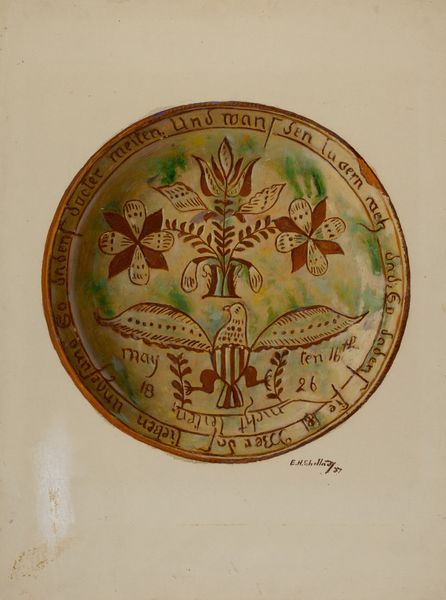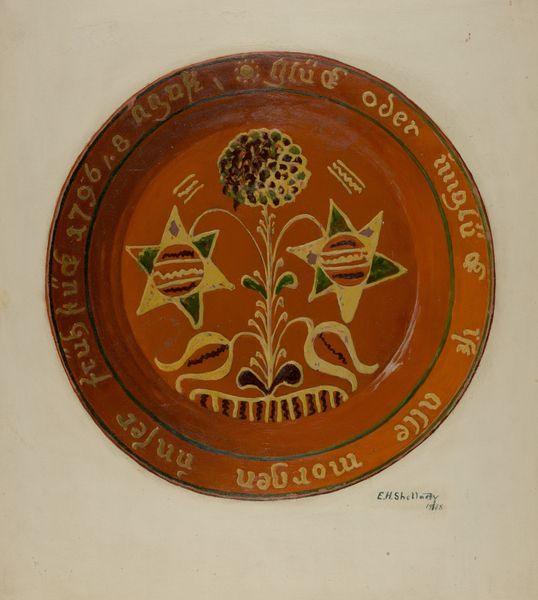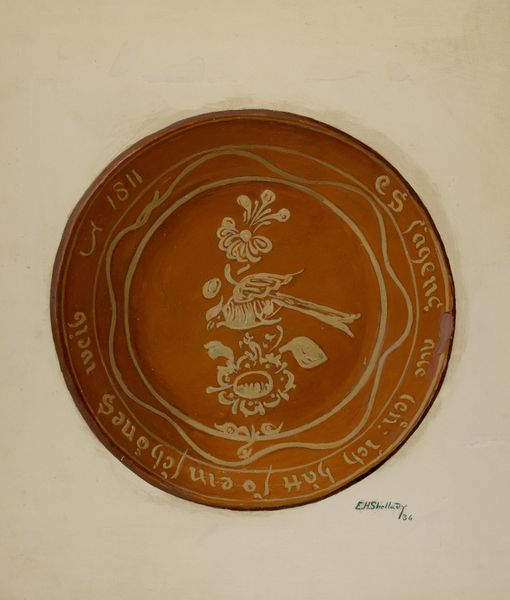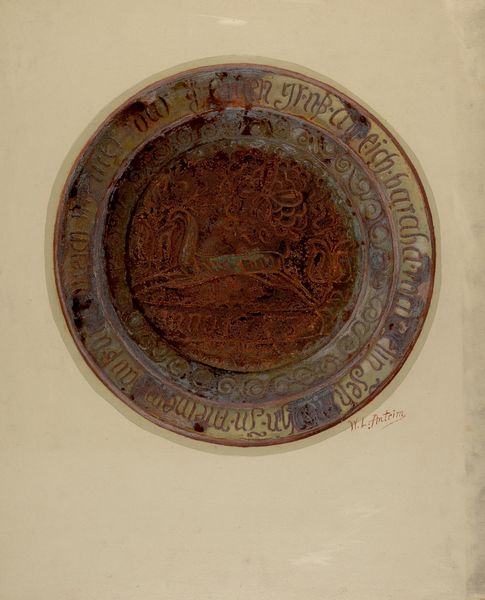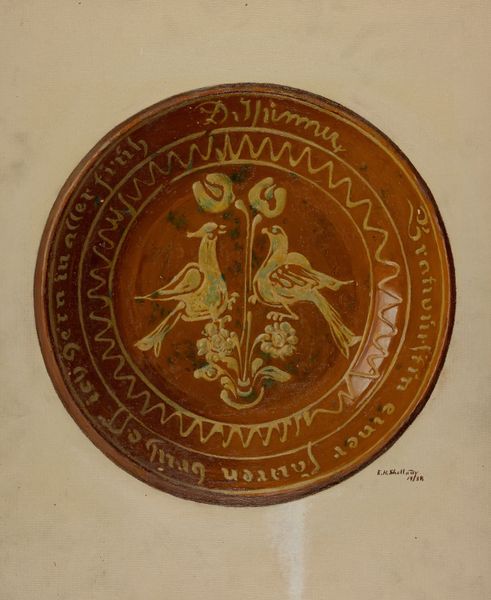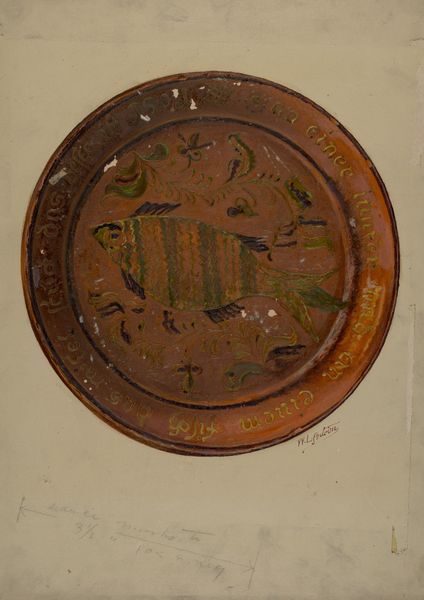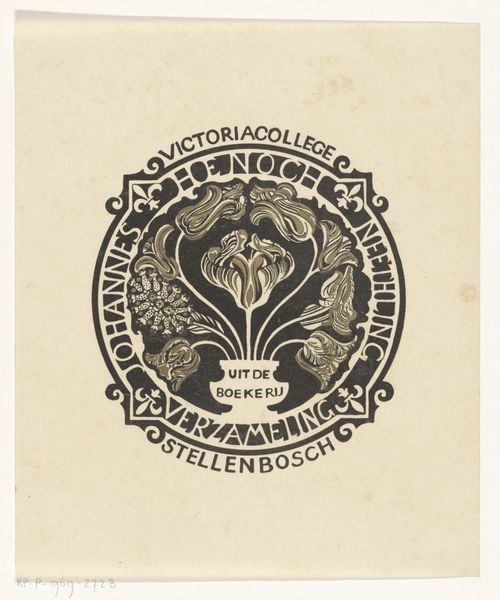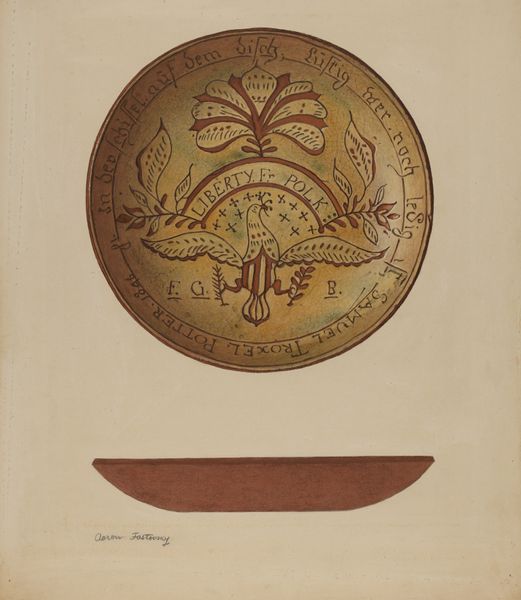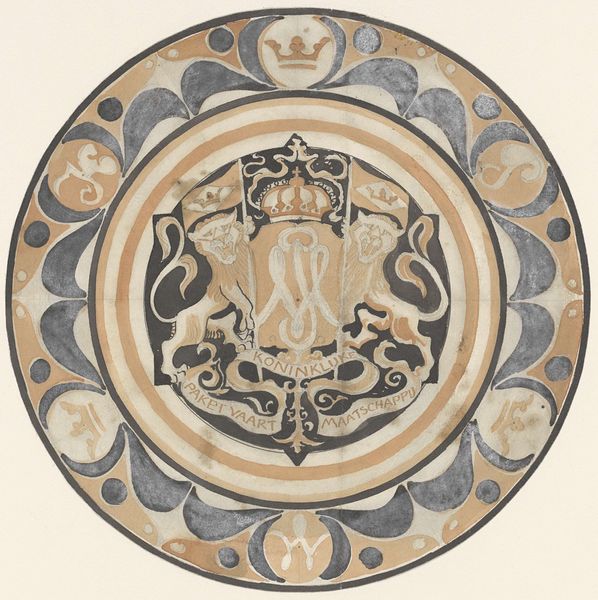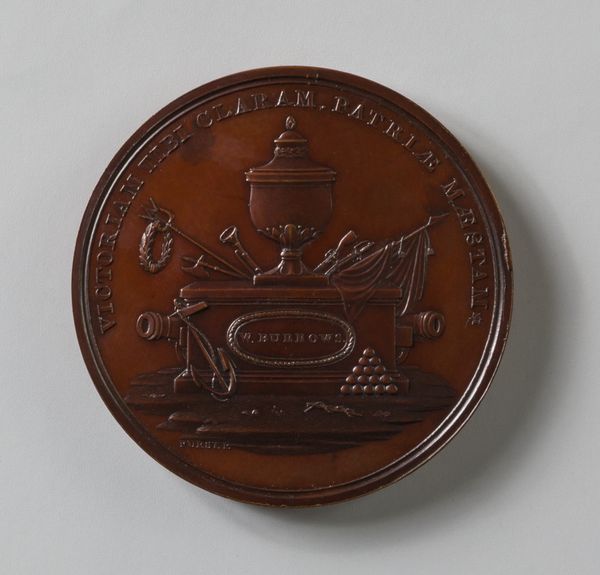
drawing, ceramic
#
drawing
#
pottery
#
ceramic
#
folk-art
#
geometric
#
decorative-art
#
watercolor
Dimensions: overall: 50.8 x 38 cm (20 x 14 15/16 in.)
Copyright: National Gallery of Art: CC0 1.0
Editor: This is a watercolor drawing of a Pennsylvania German dish, probably ceramic, made around 1937 by William L. Antrim. It's a circular design, and the colors are warm and earthy. The tulips in the center are stylized in a very distinct way. What story does this piece tell? Curator: This work, while seemingly simple, is deeply embedded in cultural and historical narratives. The Pennsylvania German, or "Dutch," tradition drew heavily on European folk art but developed a unique visual language. This plate isn't just decorative; it's a carrier of identity. How do you see this reflecting social values or beliefs? Editor: I guess the choice of a utilitarian object, like a plate, suggests these values were part of everyday life, not something separate or elevated. But what about the imagery? Curator: Exactly! Notice the tulips and other floral motifs. They were frequently used as symbols of fertility, love, and family, deeply intertwined with notions of cultural heritage and prosperity. And look at the date included around the border-- likely evoking heritage from Germany. The plate could be understood as a statement about resilience in maintaining cultural identity, especially as mass production began to erase regional and ethnic differences. Consider, also, the politics inherent in choosing what aspects of one's heritage to represent. Editor: So it’s about declaring cultural identity through common, beautiful objects? Are these types of objects often created for domestic use? Curator: In part, yes. Objects such as these become powerful statements affirming cultural values and acting as points of resistance against homogenization. The use of these kinds of artworks within homes transforms everyday rituals into expressions of group identity. Editor: I never thought about it that way. I learned a lot, especially about how folk art carries so much cultural weight. Thanks for this new point of view. Curator: My pleasure! Analyzing objects like this demonstrates how everyday art becomes a voice in the ongoing conversation of who we are and where we come from.
Comments
No comments
Be the first to comment and join the conversation on the ultimate creative platform.
